You Could Be Much Better at EQ’ing. Don’t Be Left in the Dust. (Or: The “LDFC” Method to Mastering Your EQ.)
Have you ever struggled with EQ? Do you find that your tracks don’t sound as good as the records you are referencing? Have you ever battled with getting an element to sit into your mix? Have you ever mixed a song, thought you did well, and then compared it to commercial releases only to feel like your mix wasn’t good enough?
Don’t worry. You are not alone. If you answered YES to any of those questions, we need to talk about EQ.
EQ is often a very difficult tool to master, but it doesn’t need to be.
I strongly believe that aside from balance, EQing is the most fundamental and critical part of mixing. I remember the first time I opened an EQ. I had no idea what to do with it other than to think about it like my car stereo system.
It takes most of us many years to get any good at EQing, and 10,000 or more hours to master it. So how do we get on the fast track to mastering it more quickly and easily?
It CAN be done. But before we can get on the fast track to improving our EQ skills quickly, we need to understand what to not do. There are 3 major mistakes that engineers make when learning to EQ.
- Using EQ Charts & Guides
- Relying on Analyzers and EQ Matching
- Skipping Over The Fundamentals
There is also a clear method to mastering it. More on that in a minute. First a bit more detail on the most common mistakes
Mistake #1: Relying on EQ Charts
Ever seen one of these?
Good. Now throw it away.
Charts are good to get a basic and broad understanding of what the range of an instrument is, or to give you a musical word for a frequency range that others may also use. (For example, “warmth,” “sheen,” or “whack.”)
A major mistake most newer engineers make is when they see a word associated with a frequency range and they immediately go after the word when equalizing. Instead of actually listening and figuring out what a sound needs in context of a mix, they make an adjustment based off the chart they saw online.
For example, a new engineer might thing, “let’s add presence to this because we need it to sound brighter.” But instead of adding a pleasing brightness, they make the instrument sound extremely harsh. Another example is let’s remove the “bite” out of this sound because “bite” must be bad since we are mixing a softer track.
Most of us have done this at some point.
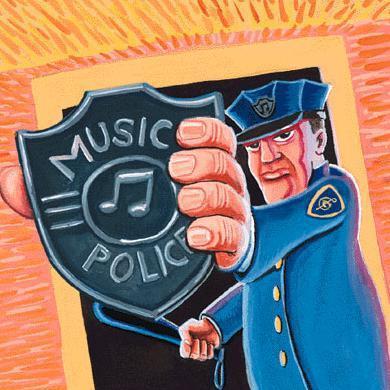 Charts are just loose guidelines, not laws of nature. Every song is different. Every recording setup is different.
Charts are just loose guidelines, not laws of nature. Every song is different. Every recording setup is different.
There are so many variables in a recording that simply generalizing is ludicrous in terms of EQ. What is “bite” on one sound can be “honk” on another or what is considered “warmth” on one song can be “mud”on another.
4khz can sound extremely harsh and shrill, or it can add beautiful top-end clarity on a source.
It all depends on the source and the context.
Thinking of frequencies in terms of words on a chart is dangerous. Throw out the chart. START USING YOUR EARS!!!
Mistake #2: Relying on Analyzers and EQ Matching
As we have just established, a chart is a chart. It is a loose guideline. The same goes for analyzer plugins. They can be extremely deceiving.
One trend I see and have experienced is that someone will open an EQ plugin, reference their mix or instrument to a great sounding mix or instrument, and then try to chase it with their EQ plugin.
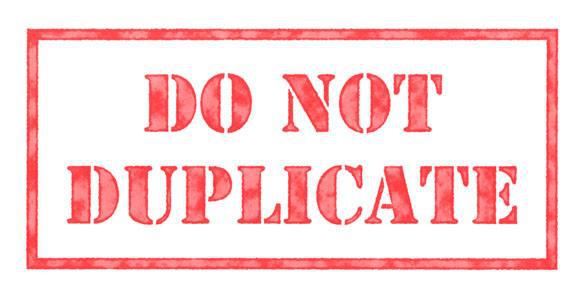 Since most modern DAWs have the average EQ curve now built right into the EQ plugin.
Since most modern DAWs have the average EQ curve now built right into the EQ plugin.
Useful? Sometimes. Dangerous! Very.
I want to make a clear distinction to explain why:
In the very beginning of learning to equalize, this can be useful to get a basic direction of where you are and where you need to go. For example, if I notice after EQ matching that everyone else on earth seems to have less 700 Hz in their guitars than I do, maybe I should pay more attention to controlling that area. OR maybe everyone else has more top and bottom end/low midrange on their guitars? Which is it!?
Oh the madness…
However, while these tools can be slightly useful when learning to use EQ, they are a crutch and most importantly the EQ curve that works for the reference source may NOT be the best EQ curve for your source in the context of your song.
One size rarely, if ever, fits all.
I believe EQ matching is a great illustration of this point. Sure, EQ matching your mix to your favorite tracks can be cool, but you are not mixing mixing those tracks and you aren’t learning how to make a great mix yourself.
You are simply settling for a sub par mix and relying on EQ matching to help you get closer to a great mix.
The same thing goes for looking at an analyzer: It looks like you have a massive spike at 400 Hz. The guitar sounds great in the mix. But, you cut 400 hz by 3 db because you glanced over at the analyzer and it “looked” wrong. Now the mix feels disconnected, the guitar is too thin, and you are wondering why.
These visualizers are tools. Occasionally, they are useful. BUT…
If you actually want to learn to become a boss with EQ, you need to train your EARS, not your EYES.
Looking at a chart and chasing graphs is not really training your ears. Listening to a mix and adjusting the EQ curve of your mix by ear is. To properly train our ears we need to avoid these tools as much as possible.
Beginners and intermediates like to take shortcuts and wonder why they haven’t mastered the skills to become great even more quickly. It is because they aren’t training correctly, or because they are training the wrong skill. This is definitely not the way to get on the EQ mastery fast-track.
Mistake #3: Skipping Over The Fundamentals
A massive error nearly everyone makes in any sort of new skill acquisition is to quickly get through the very fundamentals and go straight into the more complicated parts.
Fundamentals are everything, and most people are too impatient to master them. Human nature and our egos tell us that the more complicated it is, the more “better” or more important it is.
Unfortunately, this natural intuition is very deceiving as usually, the best results lie in simplicity, and true mastery of the fundamentals.
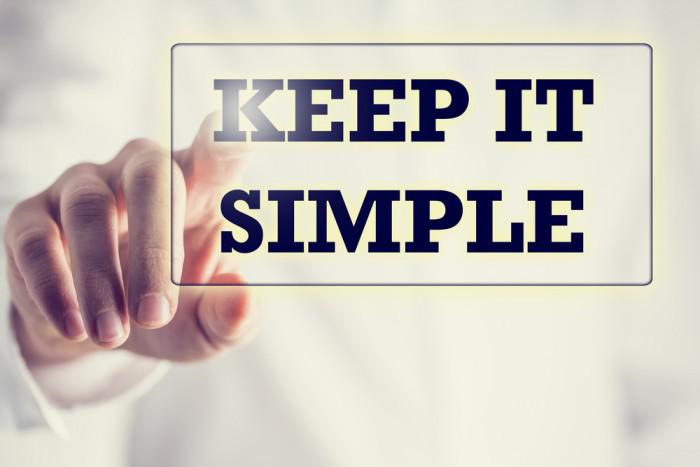 Don’t believe me? Have you ever made a ton of narrow EQ cuts on a guitar’s top end only to turn all 5 of your EQ plugins off and make one wide cut that eliminated the need for all that EQ?
Don’t believe me? Have you ever made a ton of narrow EQ cuts on a guitar’s top end only to turn all 5 of your EQ plugins off and make one wide cut that eliminated the need for all that EQ?
I have. Many times! It happens, especially to beginners and intermediates, and this is a perfect example
Here, I’ll tell you a story:
Midway into my career, I had been getting very complex in my mixing. I watched some DVD where a guy mixed a song and used 6 to 8 plugins on every channel. Because of this, I thought I had to also. The only problem was that my mixes weren’t very good.
Over time, I slowly started using fewer plugins and less complicated tools because I needed to work faster as my demand increased. Then, something amazing happened.
As my mixes got simpler, they sounded much more professional.
I had this realization later in my career, when I was working with much bigger artists. My chains were simple, but my results were very competitive. Then, I started befriending other advanced mixers and seeing their workflows. I noticed that they were all doing the same and had similar stories.
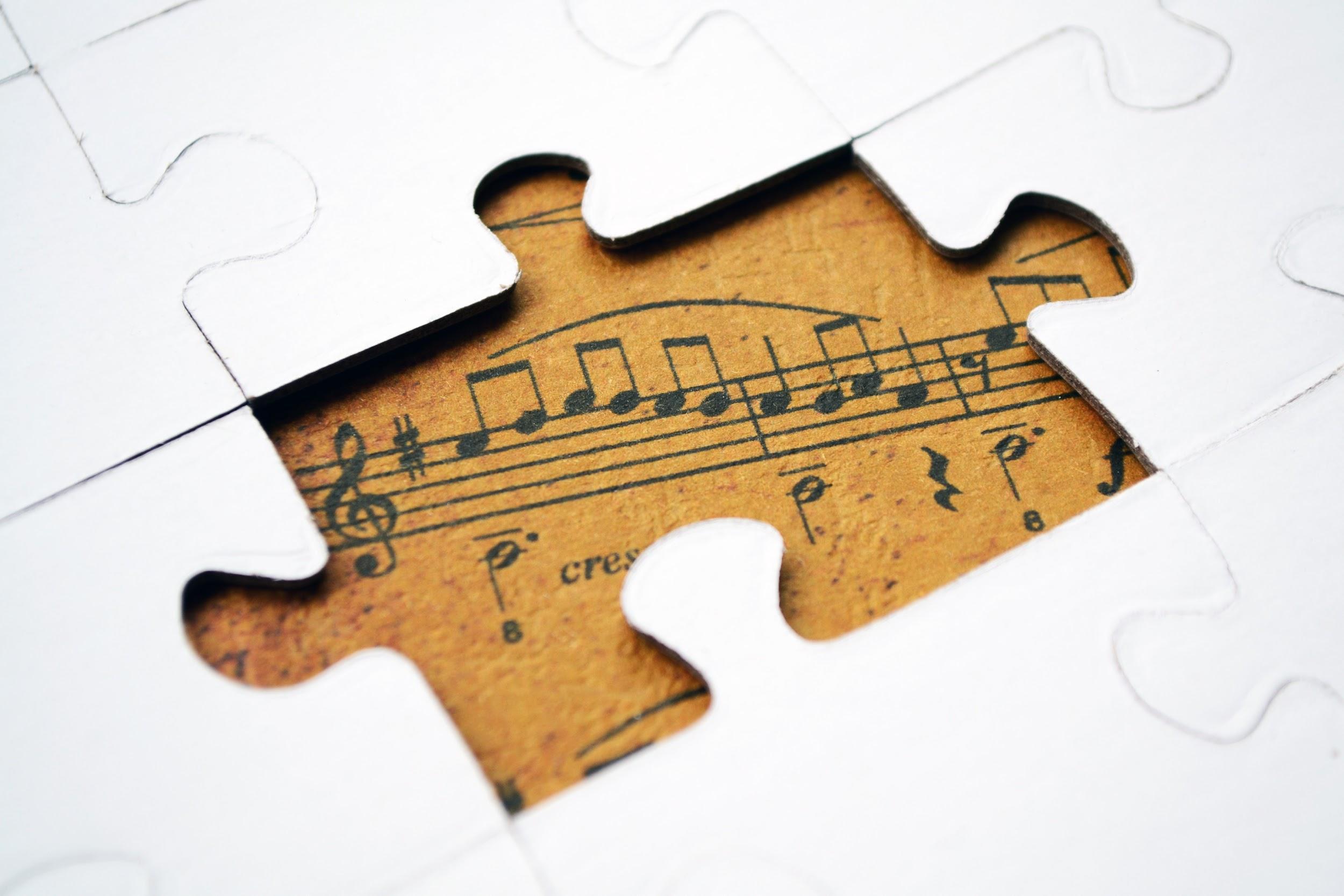 It finally dawned on me that what makes our work good is the absolute and total master of fundamentals. NOT some fancy trick that we read on a forum.
It finally dawned on me that what makes our work good is the absolute and total master of fundamentals. NOT some fancy trick that we read on a forum.
It wasn’t some sneaky EQ trick we heard about. It was knowing exactly what to EQ, and how to make the song lock together like a puzzle.
If you stop trying to be fancy with EQ and start training your fundamentals harder, you will drastically speed up your learning curve.
Now that we’ve read about what not to do, let’s talk about the learning curve of EQ and how to speed it up.
The Learning Curve of EQ
One of the most challenging things about EQ is that it has a very steep learning curve. Meaning that your ear takes time to learn to hear frequencies and will become sensitive to different parts of the spectrum at different times in your career.
I know this from experience. Let me tell you my story.
When I first started mixing, I couldn’t tell what I should do with an EQ. I only used high and low shelves to make sounds brighter or darker. I never touched the midrange.
After some time, I started using bell filters, too. I began hearing what cuts and boosts in the midrange did. My mixes improved a little.
As I got more serious and trained harder, I started getting fancy with EQ. I used all sorts of different shapes, curves, filters, and types. My mixes got better, but still sounded amateur.
Over the years, I became hyper-sensitive to certain ranges of the EQ spectrum. Suddenly there was too much 500 Hz in everything. Then it was 200 Hz. Then it was 4k. Then it was 2k. Then 900 Hz. This went on and on for years. Every 3 months or so, it seemed that there was a new frequency that was very obvious that was in everything which needed treatment.
Every time that I had a massive jump in my hearing, I always overdid these adjustments. But as I practiced, then I learned to get the EQ right and sounding great in that area. This made for a massive improvement in my mixes.
Many years went by. My mixes got way better. Mixing became an exclusive career. Then I realized something:
The brain learns in steps and has major breakthroughs.
Basically, a bunch of neural connections get made. The brain builds a network. Then, certain associations occur where it starts linking disparate parts of the network together. This accelerates as you train harder. Suddenly it feels like you had a major breakthrough in your progress. In reality, it has been building slowly and surely every day.
In practice it goes like this: You struggle for a long time and it seems like you aren’t getting better. Even though you know you are improving, you can’t really detect significant advancement it in your skillset. Then one day, suddenly… BOOM! A massive leap in development. Everything is easier. Everything you mixed from 3 months ago sucks and isn’t good. You are hearing things you’ve never heard. You feel awesome and mixing is very exciting!
Sound familiar? Guess what?
You are experiencing the learning curve of EQ and hearing EQ.
I know you are impatient though. You want it to go faster don’t you? Well, I can help you with that. Want to get on the FAST TRACK?
Exciting isn’t it?
Enough talk. Let’s do it.
The FAST TRACK
Do you want to know how to speed up this learning curve?!
We need to train harder, but more importantly, SMARTER. That and we need to do it EVERY DAY.
We need a simple and repeatable method. Something we can learn, train, and embed into our subconscious.
Since the brain is constantly forming new neural connections and learning, it is important to train this method daily to speed this process up. Once you pound this method into your subconscious you can drastically speed up the EQ learning curve and reduce your trial and error time.
Let me introduce you to the “LDFC METHOD“:
- Listen
- Diagnose
- Fix
- Compare
1. Listen
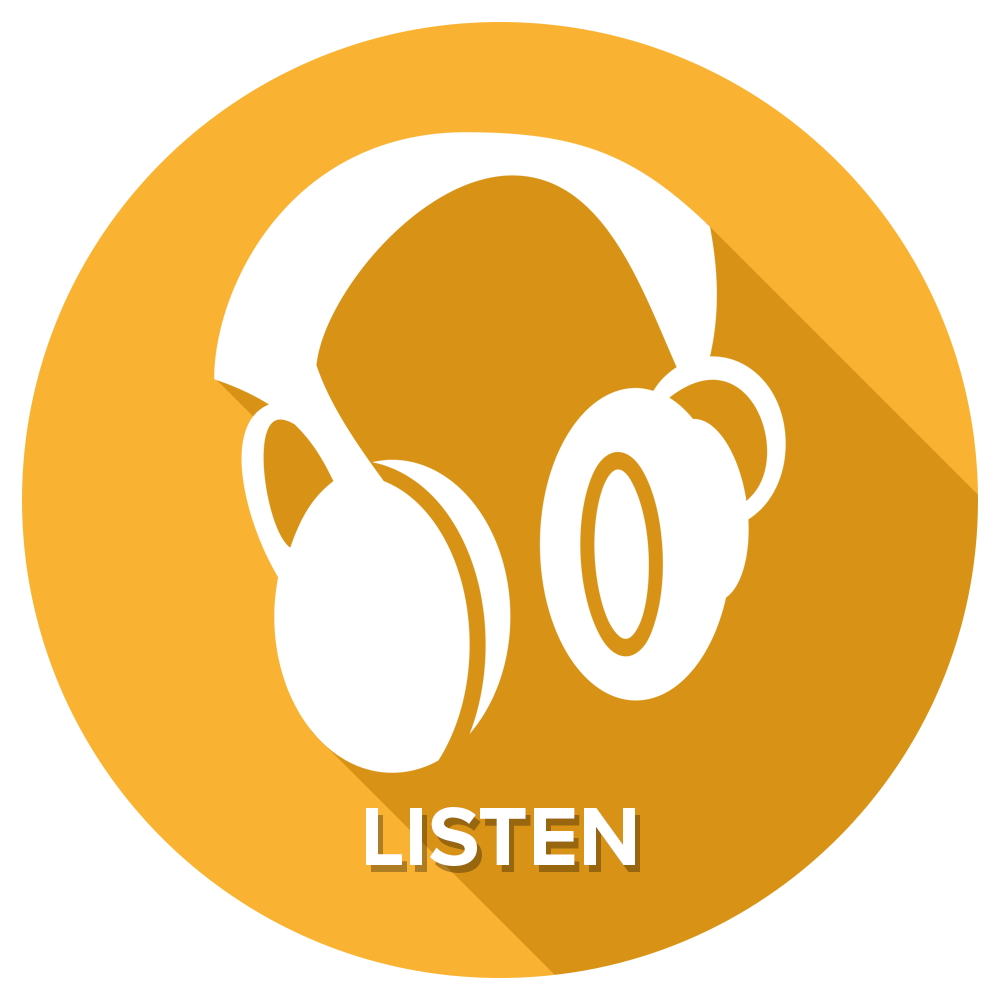 The first thing we need to do before we actually decide to make an EQ move is to actually listen. This sounds obvious. But, it is not. We need to pay attention to not only the big picture, meaning what is going on in context of the whole song—but we also need to acknowledge the details to see how they are contributing.
The first thing we need to do before we actually decide to make an EQ move is to actually listen. This sounds obvious. But, it is not. We need to pay attention to not only the big picture, meaning what is going on in context of the whole song—but we also need to acknowledge the details to see how they are contributing.
Think of it like tasting a soup. The untrained person will taste test it to see if it tastes good. The chef will taste it and not only to determine if it it tastes good as a whole, but to find out if it just needs a pinch of thyme, and maybe a bit more black pepper to make the whole soup taste even better.
In terms of mixing, we need to not only listen to the part we are EQing to make sure it sounds great, but also to check and make sure that it sounds great in the big picture of the song, and that it is contributing correctly to the other elements in it’s frequency range to create the desired balance.
As we discussed earlier, many engineers think of EQ charts or some pre-prescribed formula when equalizing. For example, “I read on forum X that mixer Y adds frequency Z to his snare drum. I’m going to do this too!”
This is the WRONG MENTALITY.
Listen to the track. Listen to the parts. Listen to how they interact. Ask yourself:
- Is there synergy amongst the elements?
- Are the elements conflicting?
- Do the the instruments lock together like a tight puzzle?
- Is something masking something else?
- Is anything eating up headroom that shouldn’t be?
- Is the tonal balance of the song (or part) correct?
- Does anything sound harsh or annoying?
- Is there anything that isn’t clear or could be clearer?
We need to know the answers to these questions. To do this you actually need to critically listen to to what is going on.
2. Diagnose
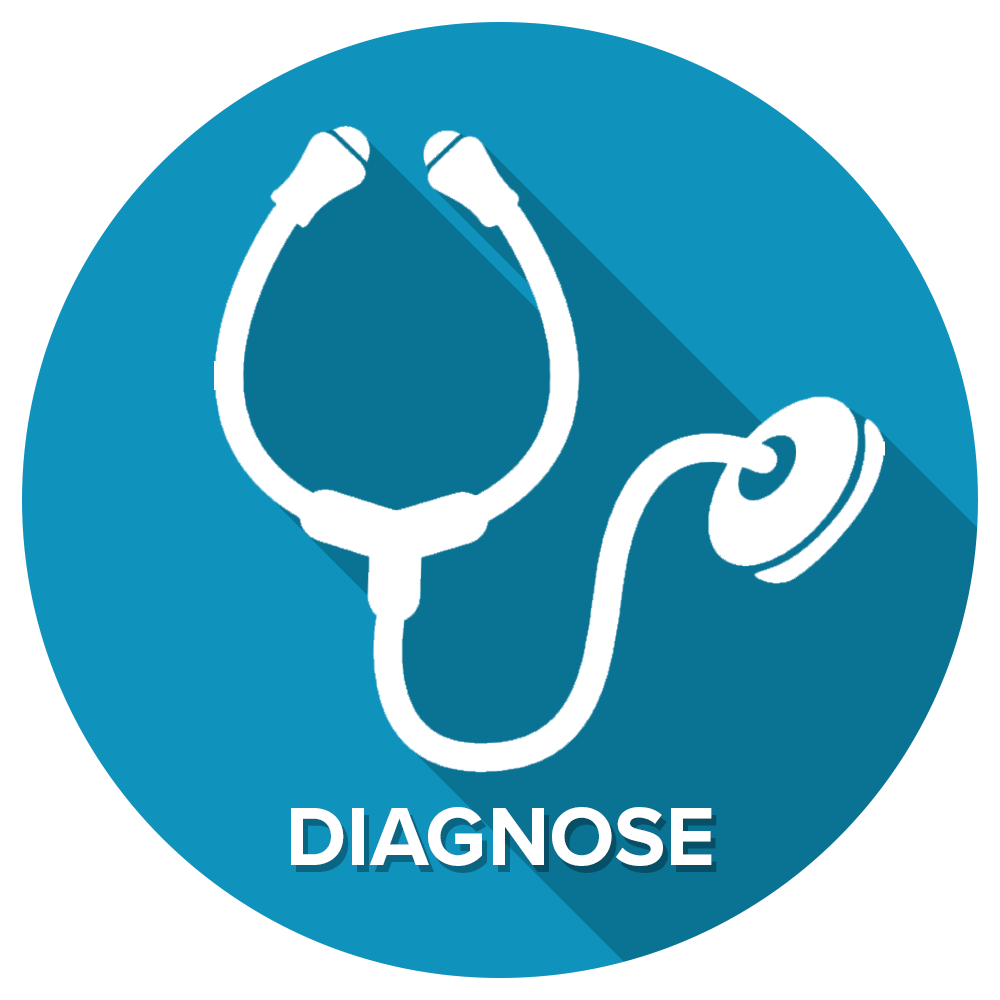 Once you’ve actually listened with focus, you can diagnose.
Once you’ve actually listened with focus, you can diagnose.
This is the first difficult part of EQing. Diagnosis can be very deceiving because of the EQ learning curve.
There are two ways to diagnose a problem:
- Looking directly at the problem
- Looking around the problem
The stage of diagnosis most of us learn first is to directly attack what we think the problem is.
For example, we think the guitar sounds harsh. As a result, we cut treble in the guitar. This type of diagnosis can take us far in making good EQ decisions.
However, seasoned pros are aware of an approach that is the opposite of this. I call it “EQing around the sides.”
Pro mixers don’t always diagnose the problem head on, they look around the sides for other problems that aren’t so obvious which can be the actual problem. It isn’t always obvious.
Sometimes the the problem you diagnose isn’t the problem. It is a symptom. It is something else that is causing the problem. This is one of the skills you must train the hardest.
For example: The midrange isn’t muddy, the mix just needs to be brighter. The snare isn’t thin on the bottom, the midrange of the bass is masking its true punch. The guitar isn’t harsh, the cymbal is. You don’t need to turn the vocal up louder, you need to cut some top end from the guitar because it is masking the vocal.
Very often, the necessary EQ move isn’t obvious. For example, the guitar midrange sounds muddy and the mix lacks focus. You are EQing the guitar but it isn’t helping. The mix is not tight.
Then, you remember this article and try looking around the sides. You try EQing the bass. As you sweep around the low mids and listen to the guitars, NOT the bass, you hear the entire mix tighten up.
It isn’t the guitars that are muddy. It is the bass, but it sounds like the guitars. You aren’t losing any perceived presence from the bass instrument, but the whole mix comes together a lot better. An experienced mixer can usually tell this is the issue and diagnosis it very quickly. A beginner will make this mistake every time.
When practicing diagnosis, it is CRITICAL to diagnose a problem, and then also try working on opposite instruments that may be causing that problem. Meaning, look around the sides. This simple advice put into practice alone will save you years of trial and error.
3. Fix
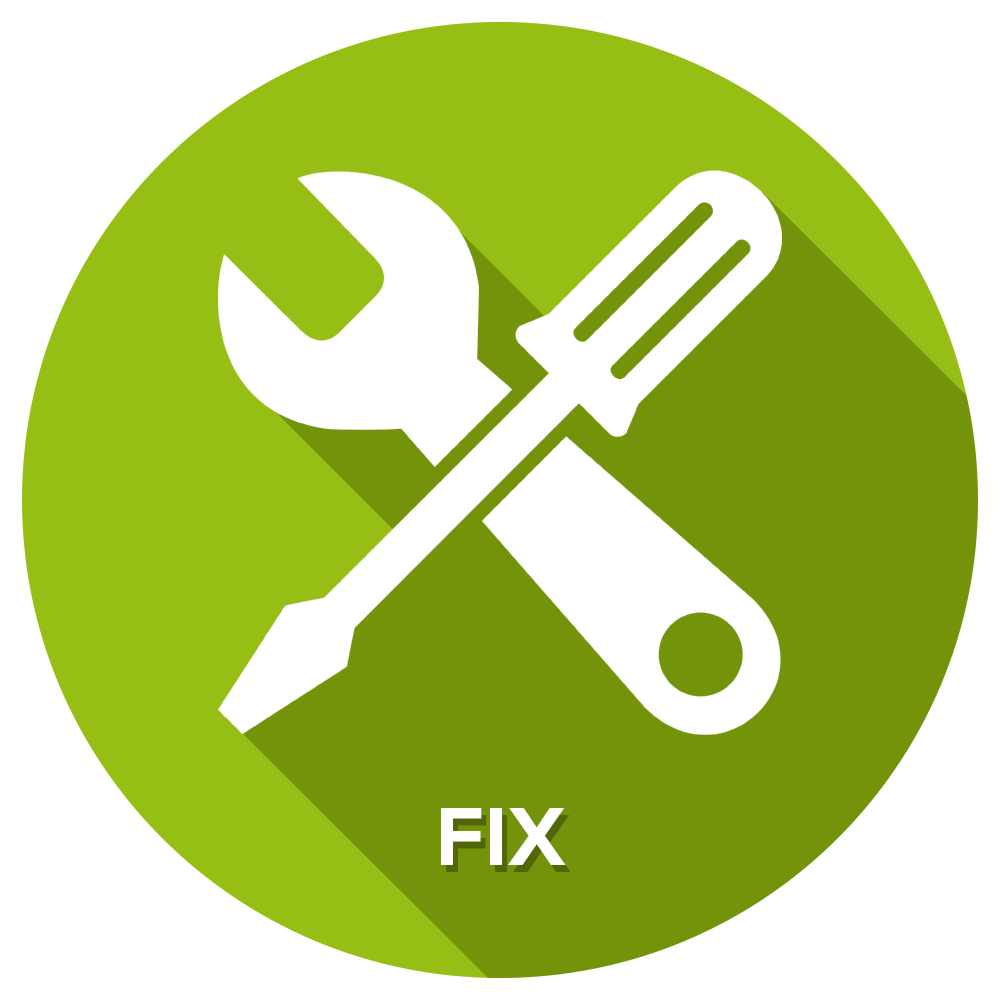 Once you have a problem diagnosed, you can then fix it. Fixing the problem is about understanding tools.
Once you have a problem diagnosed, you can then fix it. Fixing the problem is about understanding tools.
Picking the right tool for the job is critical. Try screwing in a screw with a hammer and you will understand what I mean. You would do a much more effective job using a screwdriver. The same goes for choosing your EQ curve.
What tools do we have?
- Shelves – Great for tone shaping the extremes. Add brightness or warmth to a mix or instrument.
- Resonant shelves – Cut before they boost and vice versa. Want to add bottom while tightening up the lower midrange? Want to add top while cutting a bit of harshness? These are great tone-shaping options. They can also be useful for extreme moves like making a kick drum tight and extremely deep sounding.
- Bells – Great for adding or cutting a region. For example, say you want more sheen on a mix or less honk. Maybe you want more presence.
- Narrow Bells – The surgical weapon of choice. Remove masking frequencies. Get rid of whistling frequencies in guitars, and cymbals. Remove weird resonances or harmonics. A narrow bell is like a very sharp focused cutting laser used for delicate surgery.
- Filters – Remove unwanted low end or top frequencies. Useful for creating headroom in a mix. For example, why do you need 50hz in a hi hat track? It is just muddying up your low end. You may not be able to directly hear it, but it is there and it adds up.
Once you’ve selected your weapon of choice that best fits the problem diagnosed, use it and make your EQ adjustment.
4. Compare
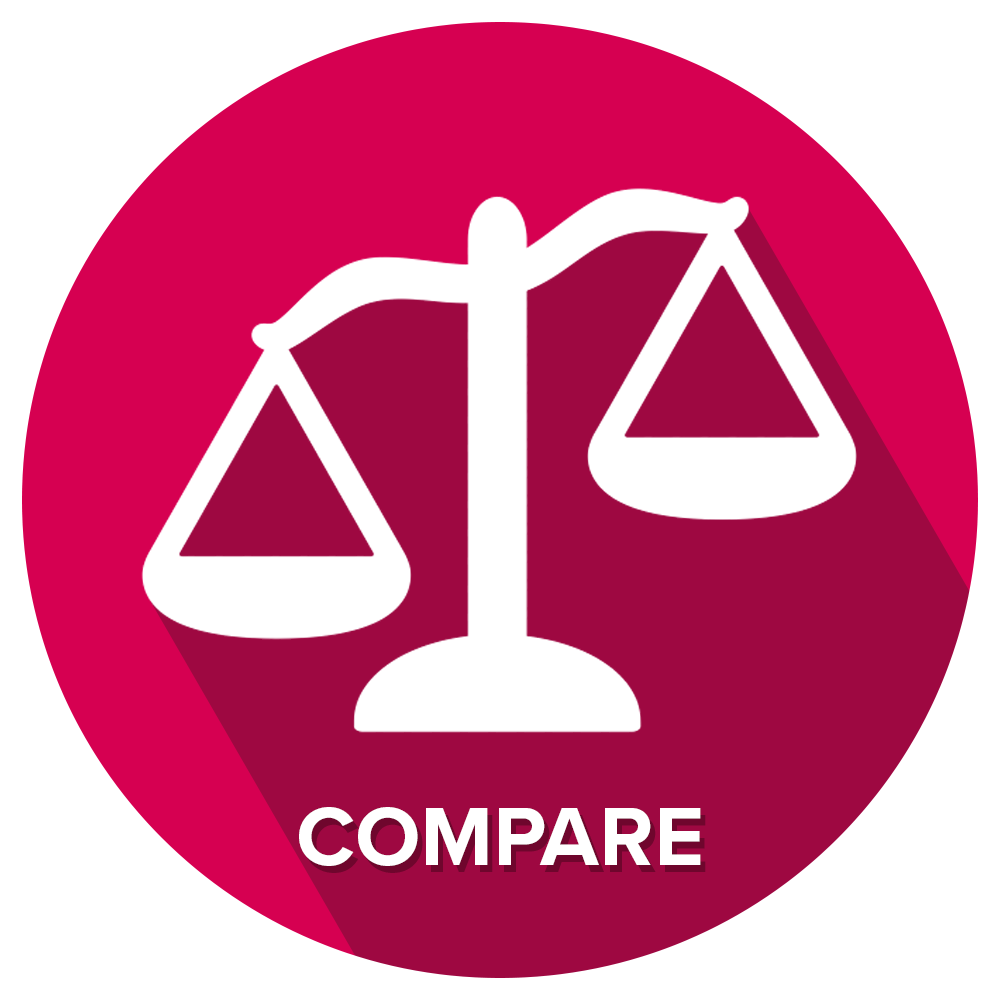 Now that we’ve made our move, we must see if it was actually a good idea. Thankfully, most EQs have a bypass feature. Listen to your EQ move in context, NOT in solo.
Now that we’ve made our move, we must see if it was actually a good idea. Thankfully, most EQs have a bypass feature. Listen to your EQ move in context, NOT in solo.
Does the mix SOUND BETTER? If yes, then move on. If the mix doesn’t sound better, then go back and rethink your diagnosis. Again, maybe try the opposite of what you just did.
Since most of us are mixing in a DAW it is easy to try alternate versions.
To reiterate, the LDFC approach is simple, but only sophisticated mixers use it and truly understand its power:
1. Listen to find problems.
2. Diagnose the problem.
3. Fix the problem. (Try to tackle it both directly, and “from the sides.)
4. Compare which way is better.
How to Train LDFC (And Win at Life.)
When you start out learning to implement LDFC every time, it is a slow process. But as you train it every day, you will get faster at it. Especially if you take my advice and practice daily.
Over time, you get really fast at it—faster and faster until it melts into a single instantaneous process.
Maybe you’ve watched me mix on NailTheMix.com and have seen how fast I EQ. My brain is so trained that I can do this in a flash without even thinking about it. I’ve trained LDFC to the point where it is automatic and intrinsic.
In fact, I didn’t even realize how fast I worked until I actually sat down and watched NailTheMix. When you are actually doing it, it seems like everything’s in slow motion, but when you observe it from an outside point of view it goes much faster.
If you want me to teach you my secretto getting on the fast track, this is it. This is how you get your EQ skill to be lightning fast, and extremely accurate:
- Every day, set aside at least 30-45 minutes to practice mixing.
- Always try to mix something fresh. DON’T KEEP WORKING ON THE SAME SONG. Nitpicking small details isn’t making you get better faster. It slows you down.
- Try to mix as fast as possible. Use only your gut impulse and don’t turn on the analytical part of your brain.
- DO NOT USE analyzers or EQ matching. It makes you lazy and negates the training. If you have actually EQ skills, you will beat these people in a mix off 10 out of 10 times.
- Get the a solid balance and EQ for the entire track in under 30 to 45 minutes.
- Go compare your mix against some reference mixes. Listen to your EQ balance and see how it stacks up against the references. Don’t worry about compression, punch, etc, just the EQ curve and clarity of the mix.
- Repeat. Daily. #NOSMALLTIME. No shortcuts.
If you practice LDFC daily, it will make a massive difference in how quickly you climb those steps of the EQ learning curve ladder. I can tell you about it all day, but there is only critical aspect to this whole article:
YOU must actually do the work!
There is no free lunch, and no shortcuts that will make you great. What makes you great is training, consistency, commitment, and having a method.
If you do the work, you will out perform 99% of people you are competing with. Most people are lazy. Don’t be lazy. Anyone can do that. Be exceptional, every day, every time.
Want to really kick your EQ skills into OVERDRIVE? Join me at urm.academy/iamenhanced.
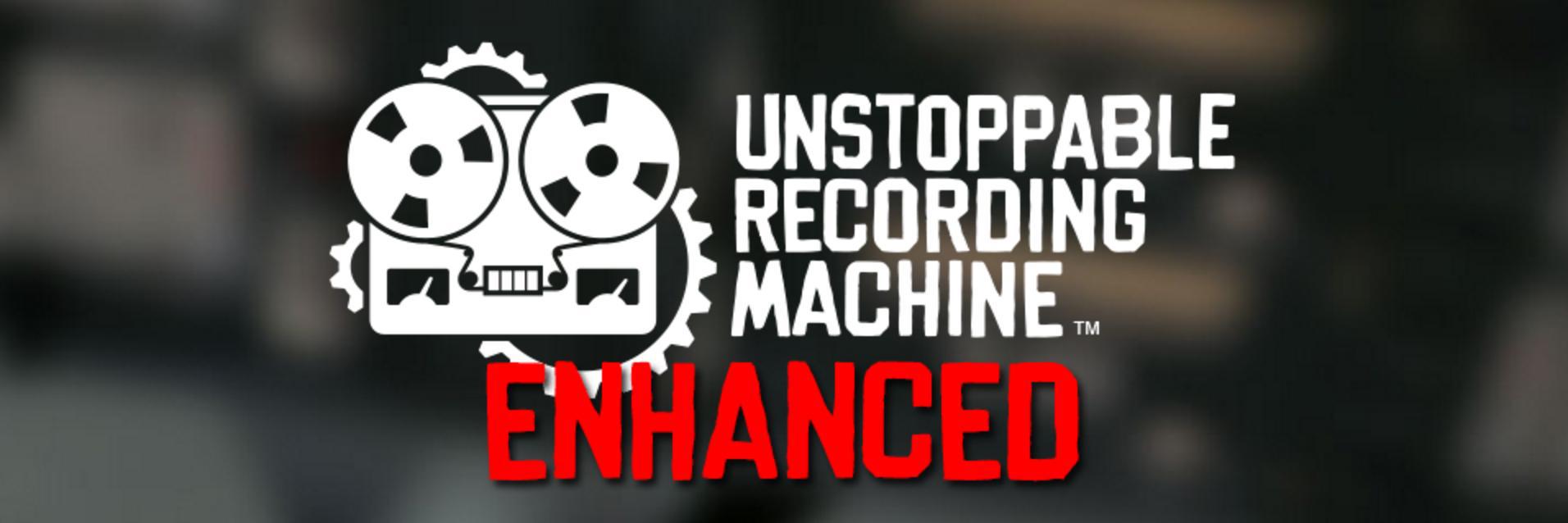
Joel Wanasek is a mixer, mastering engineer and music industry entrepreneur who lives in Milwuakee.
Please note: When you buy products through links on this page, we may earn an affiliate commission.







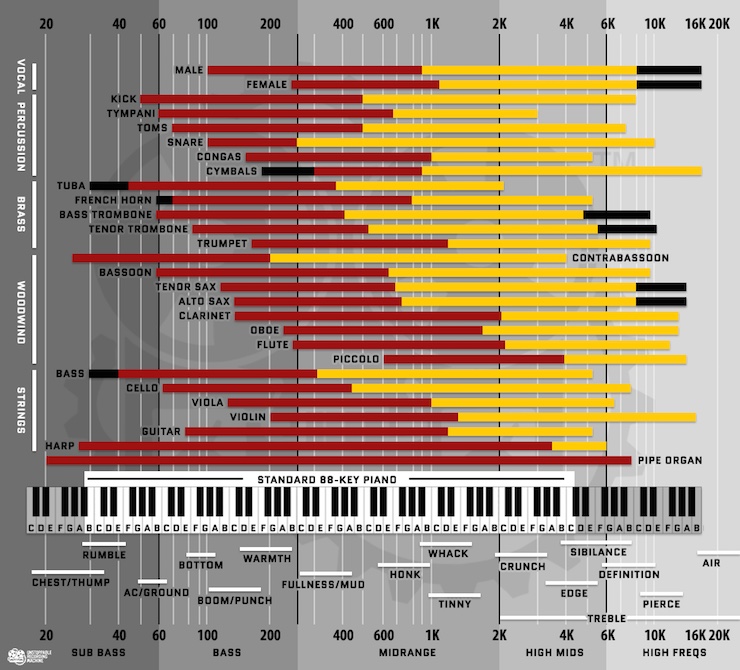
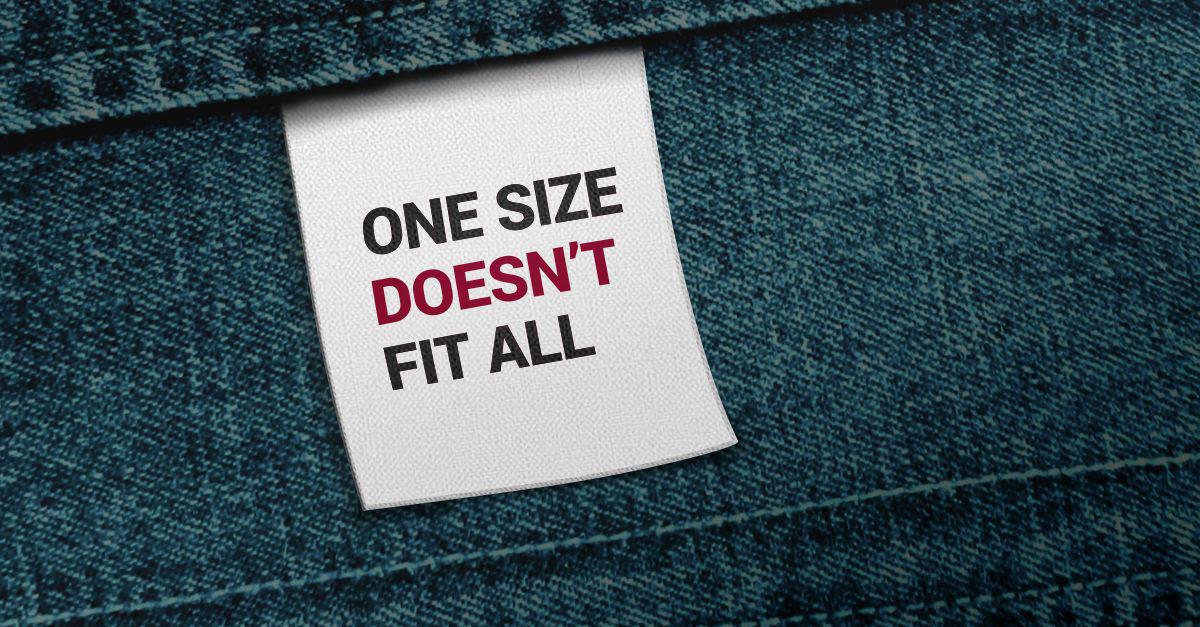
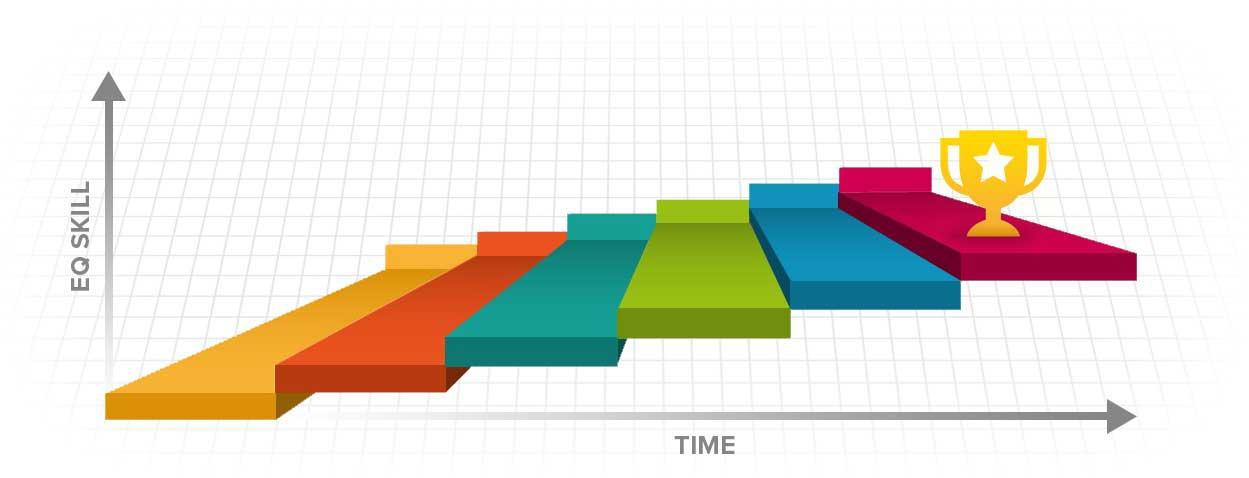
Daniel Gray
June 15, 2017 at 6:42 pm (8 years ago)Best article I’ve read on mixing. Short but succinct and I actually had one of those epiphanic moments you were referring to while reading it. Thanks, I’ll be passing this along to some of my buddies.
Martin J Shead
June 15, 2017 at 9:57 pm (8 years ago)Excellent. I had sort of fathomed out some of what you said, but you crystalised it and put me on the Yellow Brick Road.
EQing is a pain in the knee, but when it goes well, it’s music to the ears.
Keep up the good work. All the best.
MusicHead
June 15, 2017 at 10:00 pm (8 years ago)Great article. I’m interested to hear your thoughts on EQ ear training programs.
Joel Wanasek
June 16, 2017 at 9:54 am (8 years ago)Thank you Daniel, I appreciate that! Glad to hear it is helping!
Joel Wanasek
June 16, 2017 at 9:58 am (8 years ago)Thank you. I purchased one trainer many years ago and found it useful. However it wasn’t really exciting to use. I got much better results from just trying to mix a wide variety of songs quickly. This trains the gut instinct, as well as the ability to commit to decisions without over thinking. It also sets up unpredictable scenarios where you have to solve problems on the fly as you are actually mixing. While I liked the trainer, for me it was only a supplement which I got bored of quickly. However, you’d have to try one and see how it works because your mileage could vary. I’m sure for some people, the trainer could be the most amazing thing ever created.
Joel Wanasek
June 16, 2017 at 9:59 am (8 years ago)Thank you Martin! Good luck with everything.
MusicHead
June 16, 2017 at 4:01 pm (8 years ago)Thanks for the response Joel. Keep the great articles coming!
Phil Heesen III
June 17, 2017 at 3:33 pm (8 years ago)Great article, thanks!
Glenn
June 18, 2017 at 11:44 am (8 years ago)there is a really cool learning tool by Izotope (Ozone etc) folks: https://pae.izotope.com/ this provides some really nice fundemental testing (it’s considered a game) on EQ, compression etc.
Angela P. Lewis
June 19, 2017 at 2:49 am (8 years ago)Great article… not throwing out my chart though… Nicely framed above my monitors 🙂
Larry Kendrick
June 20, 2017 at 4:52 am (8 years ago)Excellent read! I use a stand alone digital recorder as my DAW. I’m training my ears slowly, and your article supports everything I happen to ‘discover’.
Chris Vandeviver
June 22, 2017 at 11:08 pm (8 years ago)Thanks for the article. I stand by learning EQ with an easy three band “analog” EQ, such as the Plug & Mix Retro EQ, or Tokyo Dawn Labs SlickEQ.
Parametric EQs and other in-depth EQs are great, except when they’re not. Too many controls = too many options = analysis paralysis = erosion of quality decisions.
Using a simple three band EQ for tonal shaping restricts decision making to the important few. Plus, you can only affect one control at a time. Which slows you down, and forces you to listen to your decisions.
Then if you need to high pass or suck out a specific frequency, pull out the stock parametric EQ.
Mark Bassett
July 4, 2017 at 1:25 am (8 years ago)I developed SAE Parametric Equaliser Training – it’s free, Mac-only and designed to teach users to identify the centre frequency of a parametric equaliser applied to any imported audio files. Download from http://technicalear.training/
Alexander Schiebel
August 31, 2017 at 2:27 am (8 years ago)Great, encouraging article. Thank you very much for your insight. I’ve read so many books on mixing, but it’s your article that actually tells me how to go on. Just great!